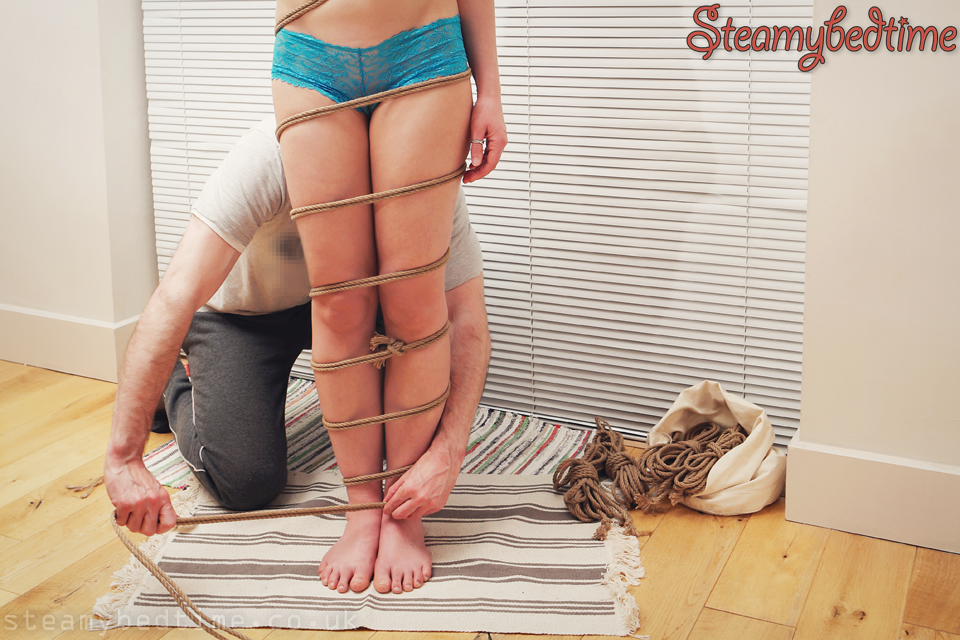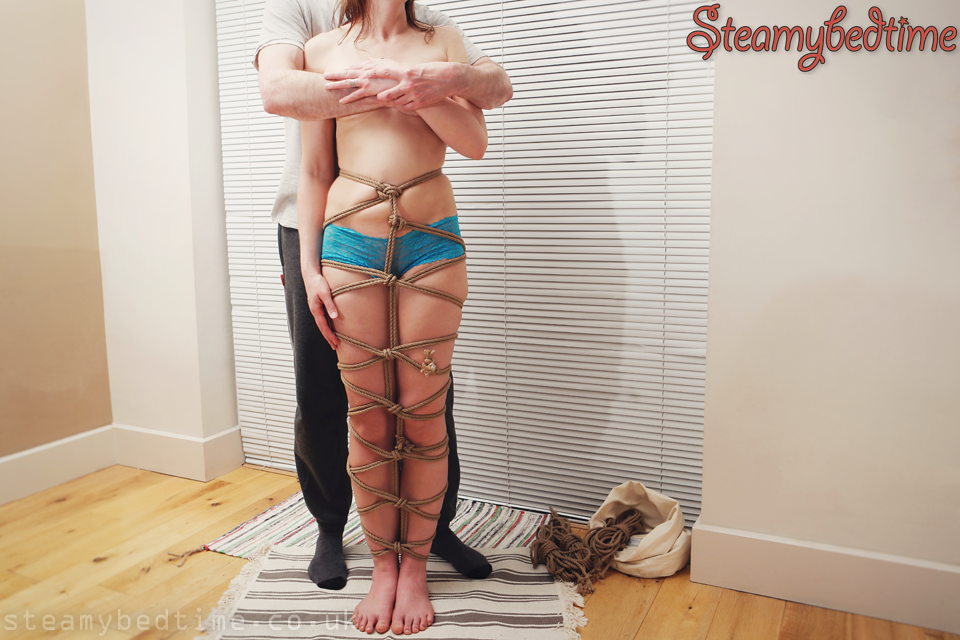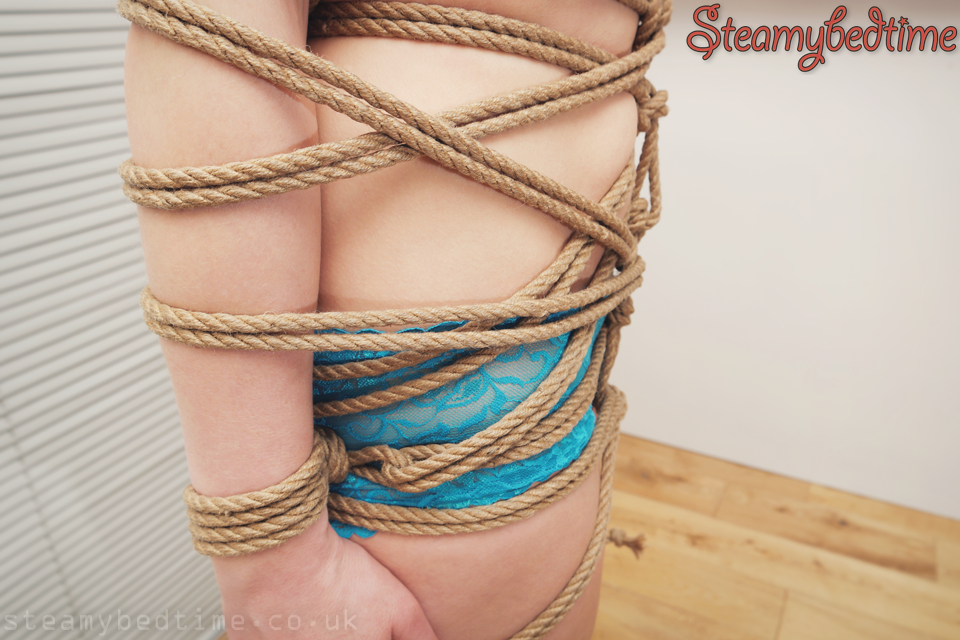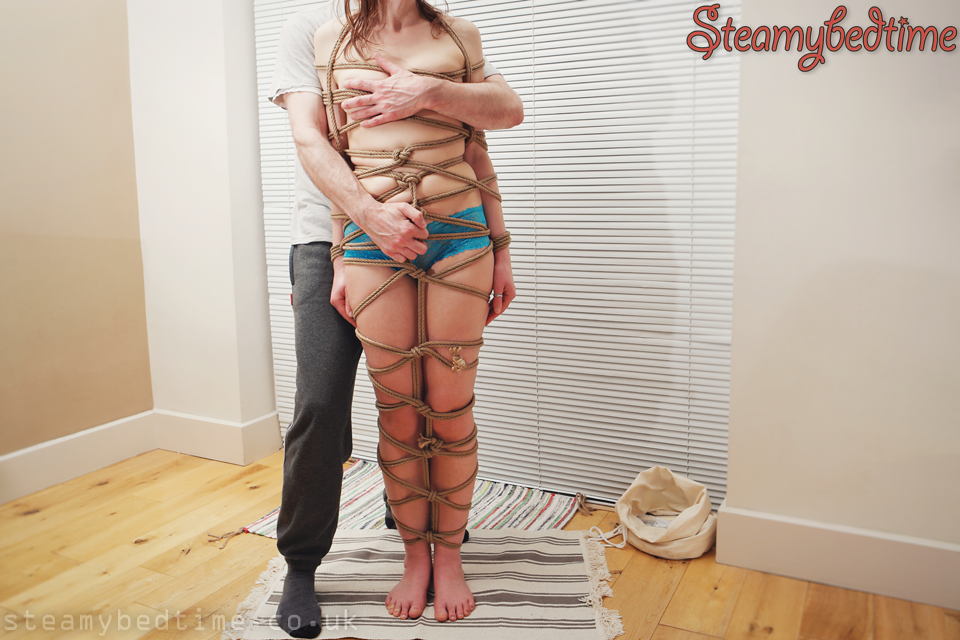To fill in a little bit of background, our experimentation with erotic rope play began initially with a desire to recreate some of the exciting and beautiful complexity that we saw in photographs of Japanese bondage. (Top tip: if you simply want to tie your lover to the bed, there are much easier ways!) We've highlighted this in earlier articles, and whilst it's been great fun, it has become increasingly apparent that we've skipped some of the basic foundations of this elegant art. We've been very happy with some of our photography, but more recently have been trying to take a step back.
We are beginners, but I feel pretty confident in making this statement - the techniques are not quite as easy as they might look and your progress is going to be very slow unless you get a really good steer in the right direction.
We've read books and articles of course, but I think if you really want to understand the underlying spirit of a concept, nothing beats hearing knowledgeable and enthusiastic proponents discussing their artistic ideas and motivations. In person would be fantastic, but video is not a bad substitute, and on a practical level will often be far more convenient. So far, we started by working our way through a selection of free courses on the Shibari Classes website. It's been really helpful for us and so we've finally taken the plunge, committed our credit card details to the account, and have been working through the exercises in Tying Techniques Part 1.

This article is not intended as a review, and we'll limit ourselves to saying just a few words about the quality of the teaching, it's fab by the way, and highlighting a couple of the learning points that we feel have helped us the most. At the time of writing the cost is around £4/month, and to say that we're happy with the value for money would be an understatement! :-)
It's probably also worth mentioning (and we are absolutely guilty of this!) we often feel quite reluctant to sign up for paid online content. It's something that we are really trying to get over, for example, by being far more amenable to buying the "premium" versions of smart phone apps, etc. On several occasions we've spent a couple of pounds on phone apps that have given us phenomenal value for money in terms of their daily use. Similar thing here... we've been following this course for a couple of weeks and the value for money is excellent. I'll get off that soapbox now, but please do try and support good content producers. :-)
Our previous kinbaku related article was Capturing the Passion back in February. That article featured Judy in a sexy red corset and a perhaps more familiar looking takate kote style box tie...
Back to Shibari Classes, we found loads of really valuable advice in the free course What I wish I had known when I started shibari - part 1 and it seemed like it was high time we looked at what the paid courses had to offer. Taking advantage of an offer in March (first month free) we tried Tying Techniques Part 1, and have been delighted to find that it was absolutely the type of content that we were looking for.

Having followed the What I wish I had known... course, we have since tried to focus a lot more on communicating emotion and passion in our rope play. Our view so far has been that it led us very nicely into this first Tying Techniques... course.
The main video tutorial section of the course is led by Nina Russ and the teaching is extremely clear, and the focus was on exactly the sort of basic techniques that we wanted to try to properly master. There is discussion of technique and solid advice about rope handling, but in particular we loved the focus on communicating intent, which happens to be exactly the type of advice we have been seeking. Furthermore, it's definitely helping us in our transition away from treating the experience like some kind of mind-bending puzzle to reverse engineer someone else's technique from an old photograph! ;-)

In these photographs you can probably see there are very few actual knots and I think this is a fair representation of the techniques being taught. Learning knots has mostly been pretty easy for us. Where this has really helped guide us is in hearing Nina's thoughts on expressing communication through rope. That feels like one of the biggest things we've gained from this course so far.
As a footnote to these photographs, and having watched and re-watched the Tying Techniques tutorial several times now, I think we may be spacing our wraps too far apart and sometimes we are finding that one of the wraps slips down and you end up with a couple of them bunched together. It's particularly noticeable with the wraps at knee level. It's something we're working on, and all the more reason to enjoy more practise sessions! ;-)

Having come this far, and not wanting to stop at the waist, we took a new rope and began with a couple of knots (a Somerville Bowline to the right wrist and using a slight variation on this Crash Restraint video How to Tie One Limb to Another) and we improvised something akin to a three-column tie. This allowed us to easily switch direction and continue upwards.

Admittedly the tie probably lost a bit of form and symmetry at this point, but the critical thing was that we felt we were using some of the learning from Tying Techniques... as building blocks in a simple way that didn't distract from the passion and fun. Throughout this play session we never felt like we were getting bogged down in super-fiddly details. It's also been the first time we had to use all six of our ropes!
We've taken the decision to remain anonymous online and I hope that's a decision that is respected, but it's been rather a pity to have to had to crop our faces from these published photographs. There's a pure joy in the original images that really reflects the mood of this being one of our most pleasurable kinbaku experiences to date. It's fair to say that's thanks in a large part to these last couple of courses that we have studied.

And finally, we include this last photo - mainly because we really like the funky angle! ;-) However, I think it does show the overall structure of the tie to quite good effect.
In conclusion, we highly recommend the Tying Techniques Part 1 course. With hindsight we absolutely got ahead of ourselves in the early stages and this course came to our attention at exactly the right moment. If you're in a similar position to us, in the transition between everyday bedroom bondage and a real desire to learn more about erotic Japanese style rope bondage, you really owe it to yourself to check out Shibari Classes and see what they have to offer.
Summary
The knickers you see throughout this article are Lovehoney Flirty Lace Boyshorts. Gorgeously simple, they're sexy but comfortable enough for any day-to-day wear. The rope is our Okinawa Jute from Esinem-Rope.
To learn more about this style of rope, check out our article: Preparation of Okinawa Jute Rope
If erotic rope bondage interests you then do check out the tutorials available over at the Shibari Classes website. You'll need an account, but it's quick and easy to sign up and there's lots of excellent free content alongside the paid options.
I think there are other similar tutorial based websites - but we're finding the format of these particularly suits our learning. If you want to get a feel for the philosophy and style, check out this 30 minute interview with Esinem and Nina: Interview and tutorial with Esinem & Nina Russ. (YouTube video, but tagged as 'adult' content so you might need to be signed in to watch it.)
As we've mentioned in previous articles, definitely check out this free Bondage Safety video course. It's applicable to more than just rope too.







